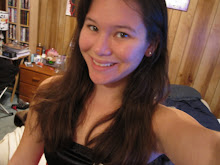
In Sex In the City, season 3, episode 9 the girls go on an emotional relationship road, with the end unseen. Through many devices used in conventional television realism, the audience is able to go on the journey with the characters.
As Fiske points out in his article Television Culture, he maps out the "codes of television". The first level of reality, he argues is what is on display for the audience to see. In this episode, Carrie struggles with maintaining her current relationship with her artistic boyfriend, Adian, and her mixed feelings over her break up with "Big". Miranda is also struggling to maintain a shared living space with her ex boyfriend and letting go of the feelings of guilt and emotional ties in order to move on from the relationship. Charolette's impending engagement makes her use techniques that have been shown to work between Trey and his mother in order to initate the engagement. Lastly, Samantha's struggles with her "bad tasting" boy toy leads her down a rocky road.

All four woman allow the situations to effect them into emotional responses that in turn effect their behavior to the men in their lifes and their interactions with the other women. This leads to Fiske's second level of the representation. All of the woman are presented within their own enviroment throughout the episode, helping to create the character themselves. The characters of Charolette, Samantha, Miranda, and Carrie are based on stereotypes that Carrie often narrates herself. This alone is it's own representation-a lense if you will-that helps the audience observe and then interpret what they are observing through the character of Carrie. Throughout this episode, it is as though there is a specific lense in which the audience is forced to view the situations through. In a definite sense, the lense is Carrie, in a broader, more general sense, the lense that is imposed is the woman's outlook/view of their environment/life.
These all in turn lead to Fiske's third and final level of the codes of television, ideology. Much like the lense put on the episode [or show in general if you will], the ideology being presented is from the female perspective, though different depending on the storyline and the narration. In addition, there is also the representation the the upper white class, whose relation to capitalism and materialism is very much influencing their daily lives. Carrie in particular we learn has thousands of dollars worth of shoes in her closet, yet does not that the money to renovate her apartment. She is a product of capitalism and materialism because it could be argued, her status in society.
All levels of the television medium effect what the audience takes away from the the specific show. The editing, the music, the styling and the casting effect what reality is being represented and the ideology being reinforced by the characters and storylines. Every show on television today is demonstrating a "reality", as well as an ideology, or some may say, an agenda. What is the "reality" and ideology being presented in your favorite television show?

No comments:
Post a Comment